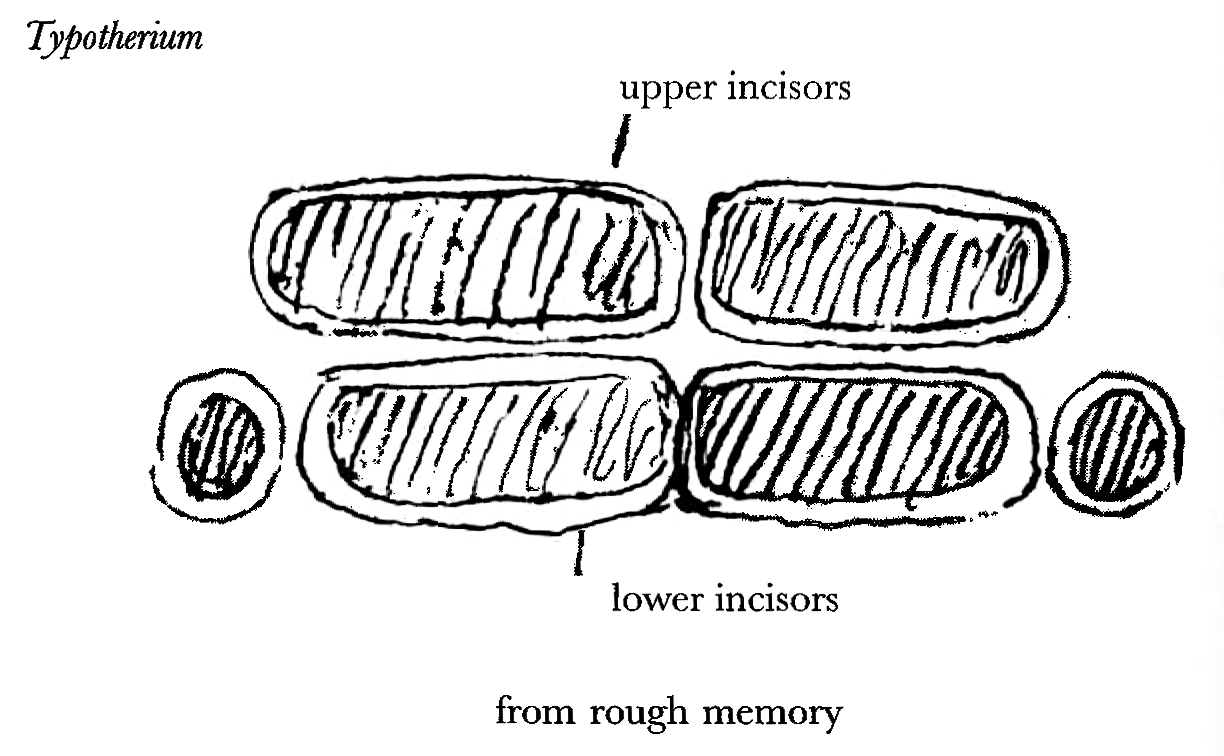From Hugh Falconer 24 April [1863]1
21 Park Crescent | N.W.
24 April
My Dear Darwin.
Lest I should have misled you through my banter about the Insectivore cross—in the Typotherium, I think it right to let you know, that I cited insectivore simply as a term of comparison to convey to you an idea of the outline of the crown of the molars.2 In reality there is no insectivore affinity. The affinity is with Toxodon; the incisors of an overgrown Rodent; and the Cerebral box—of the skull shaped somewhat like some of the larger herbivorous Marsupials. There may be other odd points of detail. The Creature is so singular, that the names Typotherium and Mesotherium were thought of for it by the French.3 I thought you would be interested about it—and I wrote to you. The skull was quite fresh looking. I suppose there is a Cast of it in England by this time, at the Coll. of S. Flower at my suggestion has written for it.4
Gratiolet—the greatest of living French Anatomists, told me, that Glyptodon, by its brain, is a true Bradypus 5 They have a magnificent entire skull of it—also—absolutely perfect
The fossil human jaw of Abbeville—is I believe a plant, got by by the workmen. I have written a letter about it.6
Yours Ever | H Falconer

Footnotes
Bibliography
Boylan, Patrick J. 1979. The controversy of the Moulin-Quignon jaw: the role of Hugh Falconer. In Images of the earth: essays in the history of the environmental sciences, edited by Ludmilla J. Jordanova and Roy S. Porter. Chalfont St Giles, Buckinghamshire: British Society for the History of Science.
Carpenter, William Benjamin. 1863. On the fossil human jawbone recently discovered in the gravel near Abbeville. Proceedings of the Royal Society of London 12 (1862–3): 524–9.
Correspondence: The correspondence of Charles Darwin. Edited by Frederick Burkhardt et al. 29 vols to date. Cambridge: Cambridge University Press. 1985–.
DNB: Dictionary of national biography. Edited by Leslie Stephen and Sidney Lee. 63 vols. and 2 supplements (6 vols.). London: Smith, Elder & Co. 1885–1912. Dictionary of national biography 1912–90. Edited by H. W. C. Davis et al. 9 vols. London: Oxford University Press. 1927–96.
South America: Geological observations on South America. Being the third part of the geology of the voyage of the Beagle, under the command of Capt. FitzRoy RN, during the years 1832 to 1836. By Charles Darwin. London: Smith, Elder & Co. 1846.
Van Riper, A. Bowdoin. 1993. Men among the mammoths: Victorian science and the discovery of human prehistory. Chicago and London: University of Chicago Press.
Summary
Further description of the Toxodon-like mammal, Typotherium.
Letter details
- Letter no.
- DCP-LETT-4125
- From
- Hugh Falconer
- To
- Charles Robert Darwin
- Sent from
- London, Park Crescent, 21
- Source of text
- DAR 164: 15
- Physical description
- ALS 3pp
Please cite as
Darwin Correspondence Project, “Letter no. 4125,” accessed on 6 May 2024, https://www.darwinproject.ac.uk/letter/?docId=letters/DCP-LETT-4125.xml
Also published in The Correspondence of Charles Darwin, vol. 11


